I Think I Know What You Mean, But…
Episode I: Your Jargon or Mine?
Irish playwright George Bernard Shaw observed that England and America are two countries separated by a common language. The same can be said of the communications between material specifiers, building products suppliers and lumber distributors.
Every profession and field of practice develops a language unique unto itself. While some acronyms and terms are specific to a field, others are used by two or more trades – albeit not always with the same meanings.
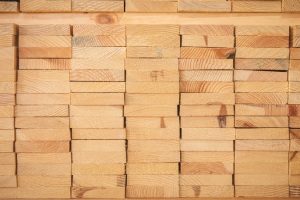 Unfortunately, when one or both members from related but different industry segments don’t know that they’re using a shared term that means something different to each party, effective communication breaks down. With any luck, at least one of the parties senses that there’s not a 100% understanding of the materials discussed and asks a series of clarifying questions. We see this happen when materials are specified by buyers (i.e., designers, builders, procurement specialists) who may not be aware of the jargon specific to the supply category and “misuse” an industry term, or they simply make up a description that means nothing to the supplier.
Unfortunately, when one or both members from related but different industry segments don’t know that they’re using a shared term that means something different to each party, effective communication breaks down. With any luck, at least one of the parties senses that there’s not a 100% understanding of the materials discussed and asks a series of clarifying questions. We see this happen when materials are specified by buyers (i.e., designers, builders, procurement specialists) who may not be aware of the jargon specific to the supply category and “misuse” an industry term, or they simply make up a description that means nothing to the supplier.
For example, a builder sends over a list of materials to their supplier. The list includes “green board.” Without other descriptive qualifiers, to a drywall supplier, “green board” would refer to mold and mildew resistant drywall. To a lumber dealer, “green board” might suggest preservative treated lumber, or it could mean lumber that has not been kiln dried.
Knowing how the requested material will be used can help the supplier more quickly discern the product that’s needed. As building material suppliers, we know very well that material lists frequently lack the details that help ensure customers get the correct material in the right quantity the first time. As much as we like our customers and suppliers, going extra cycles on email or making multiple phone calls to clarify what the required product is could be avoided just by learning and using the correct terms when specifying the material.
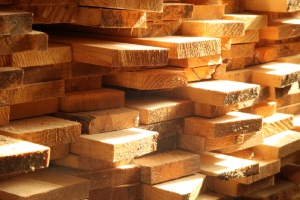 Following are five terms we see in requests for quotes, but are misused, have multiple meanings or have no meaning at all (at least they’re not recognized trade jargon) to suppliers of lumber products. For each, we’ll identify what we think may have been meant, possible alternate interpretations, and an explanation as to why the phrase may be misleading or require additional context to ensure that the correct material is quoted.
Following are five terms we see in requests for quotes, but are misused, have multiple meanings or have no meaning at all (at least they’re not recognized trade jargon) to suppliers of lumber products. For each, we’ll identify what we think may have been meant, possible alternate interpretations, and an explanation as to why the phrase may be misleading or require additional context to ensure that the correct material is quoted.
Pressure Treated (PT) Lumber/Plywood
What We Think You Mean: Preservative Treated (PT) Lumber
Alternate Interpretations: Fire Retardant Treated (FRT) Lumber/Plywood that’s undergone a pressure treating process to impregnate it with a fire-retardant chemical.
Why This Is Not Splitting Hairs: “Pressure treating” is a process used to impregnate the cells of wood with a chemical. The chemical could be for preservation and rot-resistance OR for fire-retardancy. (THERE IS NOT one chemical that does both.)
Guidance: When seeking a quote for or ordering pressure treated lumber, specify “pressure treated preservative” or “pressure treated interior (or exterior) fire retardant.”
Waterproof Lumber/Plywood
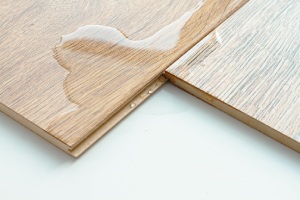 What We Think You Mean: Preservative Treated (PT) Lumber
What We Think You Mean: Preservative Treated (PT) Lumber
Alternate Interpretations:
- Wood that will not rot with repeated or constant exposure to water.
- Heat Treated wood (we’ll discuss why “Waterproof” could be construed to mean Heat Treated below).
Why This Is Not Splitting Hairs: “Waterproof” wood is a made-up term. Please don’t use it! Waterproof wood isn’t a thing. Wood is naturally vulnerable to water. Some wood species are more water resistant than others, but water will eventually break down the structure of wood.
Guidance: Remember that waterproof wood does not exist. If preservative treated lumber is required, specify “pressure treated preservative.” Else, if a naturally rot-resistant wood is desired, identify the specific species of wood.
Water Treated / Weather Treated Lumber/Plywood
What We Think You Mean: Preservative Treated (PT) Lumber
Alternate Interpretations: Thermally modified wood.
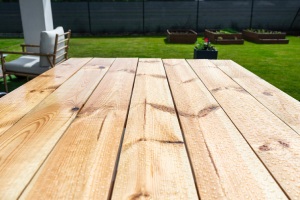 Why This Is Not Splitting Hairs: “Water Treated” and “Weather Treated” wood are also made-up terms. (Please don’t use these either!) Wood can be pressure treated with preservative/pest-resistant chemicals at different levels of concentration (a.k.a., “retention”) to make it suitable for use in applications that range from relatively mild conditions (Use Category 2 /”UC2” – Interior construction, above ground, damp use) to severe (UC5C – Salt water immersion).
Why This Is Not Splitting Hairs: “Water Treated” and “Weather Treated” wood are also made-up terms. (Please don’t use these either!) Wood can be pressure treated with preservative/pest-resistant chemicals at different levels of concentration (a.k.a., “retention”) to make it suitable for use in applications that range from relatively mild conditions (Use Category 2 /”UC2” – Interior construction, above ground, damp use) to severe (UC5C – Salt water immersion).
Wood that has undergone thermal modification (a.k.a. “heat treated”) is resistant to rot and exposure to the elements, so could be construed as wood able to withstand weather. In other words, “weather treated.”
Guidance: Remember that “water treated” and “weather treated” are not actual types of treated lumber. When specifying wood that is pressure treated with preservative chemicals, say that you need “pressure treated preservative” lumber/plywood. It can also be helpful to identify the Use Category for the treated wood. The Use Category indicates the concentration of preservative chemicals required based on where the treated material is used.
If seeking wood that is weather resistant without any chemical treatments, specify the species of lumber or that “heat treated” or “thermally modified” lumber is required.
Exterior Plywood
What We Think You Mean: Preservative Treated (PT) Lumber/Plywood.
Alternate Interpretations: Plywood that has an Exterior bond classification.
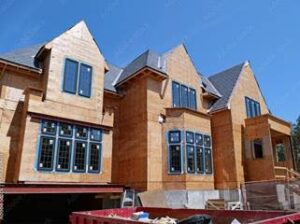 Why This Is Not Splitting Hairs: The term “exterior” as part of a specification often causes confusion as “exterior” has a very specific meaning in the plywood rating classification system.
Why This Is Not Splitting Hairs: The term “exterior” as part of a specification often causes confusion as “exterior” has a very specific meaning in the plywood rating classification system.
Plywood panels are classified into one of two bond classifications: Exterior OR Exposure 1. Panels with an Exterior bond classification indicate that the adhesive used in its assembly can sustain repeated wetting and redrying or long-term exposure to weather. (Note that an Exterior bond classification does NOT indicate resistance to moisture, rot and decay.)
Exterior rated panels will have “C” grade veneers or better on both the face and the back. For example, AB Marine Grade, BC Underlayment and CC Struct I plywood are all Exterior panels.
By contrast, Exposure 1 panels can resist the effects of moisture due to construction delays but are not intended for prolonged exposure to water. Exposure 1 plywood will have a “C” face and a “D” back. While these panels are familiarly known as “CDX”, technically, they fall into a grade of plywood called Rated Sheathing.
Both Exposure 1 and Exterior panels are made with an exterior rated adhesive, however, the improved veneers used for Exterior panels make those panels more resistant to water penetration that will compromise its integrity.
Neither Exterior nor Exposure 1 rated panels have any inherent resistance to rot, so must be treated, painted or stained to protect the wood from rot and decay.
Guidance: Before requesting a quote or ordering material, know how the product is being used. Ideally, have the customer confirm whether they need lumber or plywood that’s been preservative treated or fire-retardant treated. If fire-retardant treated material, is it for interior or exterior use? If the plywood is untreated, confirm the desired grade. Again, if the grade is a CC or better, it will be an Exterior panel; if CD or lesser, an Exposure 1 panel.
Knowing the application for the material helps ensure the proper material is quoted and received.
Green Board
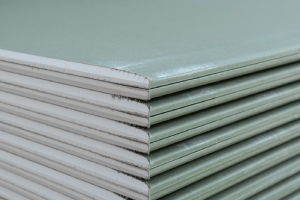 What We Think You Mean: Gypsum board that is mold/mildew resistant.
What We Think You Mean: Gypsum board that is mold/mildew resistant.
Alternate Interpretations:
- Preservative Treated (PT) Lumber/Plywood.
- Lumber that has not been kiln-dried is called “green wood” in the lumber industry.
- FSC-certified lumber (qualifies for LEED credits when building in a manner consistent with environmentally sustainable/“green” practices).
Why This Is Not Splitting Hairs: “Green board” is a standard phrase used in the drywall world that indicates the panel has mold and mildew resistant qualities. It has a green paper face. In the lumber industry, though, preservative treated wood traditionally has a greenish hue and could be referred to as green board, but “green” lumber is the term used for wood that has not been kiln dried. And because FSC-certified building materials are closely tied to “green” building practices, they could also be referred to as green lumber. Granted, this meaning is more contrived, so would require more explanation to make sure the right material was being sourced.
Guidance: Specifically identify if preservative treated or FSC-certified material is required. Or, if lumber that has not been kiln dried is needed, add the phrase “not kiln dried” as a qualifier for “green lumber.”
Just by considering the above five phrases, we can see why having an awareness of the end use for the lumber or plywood being quoted or ordered, and using the correct nomenclature for the materials based on their application can help avoid misunderstanding when quoting a job or ordering materials.
To promote greater awareness and understanding of misused terms or phrases that otherwise create confusion when sourcing lumber and plywood, we’ll periodically post additional articles to draw attention to these phrases and offer guidance to help you specify materials more effectively.
About Curtis Lumber & Plywood
Whether purchasing for stock or to support your customers’ unique project requirements, trust CLP’s second-to-none depth of experience and technical knowledge to ensure your customers get the high-quality and correctly treated material they need.
If you are a lumber retailer and have questions about treated wood products or need to place an order by the trailer load, unit or piece, call Curtis Lumber & Plywood at (703) 972-1947.

